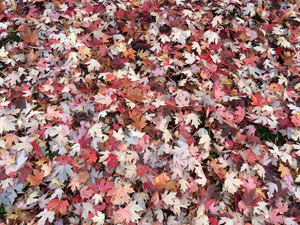Soil Science Society of America
5585 Guilford Road • Madison, WI 53711-5801 • 608-273-8080 • Fax 608-273-2021
www.soils.org
Twitter | Facebook
NEWS RELEASE
Contact: Hanna Jeske, Associate Director of Marketing and Brand Strategy, 608-268-3972, hjeske@sciencesocieties.org
From dead leaves to rich soil
Mar. 1, 2016 – Those dead leaves you forgot to pick up last spring can turn into very rich soil if handled the correct way. The Soil Science Society of America (SSSA) March 1 Soils Matter blog post explains the process of how leaves are decomposed by worms, bugs and microbes – and turned into nutrient-rich compost and soil for your garden.
Soil scientist Jessica Chiartas explains the “soil food web":
- Invertebrates -- earthworms, beetle larvae, millipedes, mites, slugs, and snails -- that live in the soil shred plant materials into smaller and smaller pieces, increasing the surface area on which soil bacteria and fungi can prey. Mulching the litter with your mower helps speed this process along, but in natural areas like forests, nature does all the work!
- Next up is something you might call mold. Scientists call it fungi. Fungi send out filamentous threads, called hyphae, that operate much like plant roots. These hyphae release acids and enzymes necessary to break down dead plant material. This makes nutrients available to plants to sustain their own growth. You may have seen this whitish “mold” under leaves and thought poorly of it. It’s quite hard-working, and adds a lot to your soil.
- As the litterfall is consumed by the decomposer food web, water and inorganic nutrients (such as nitrogen and phosphorus) are released into the soil, where they can be taken up again by plants to foster new growth.
“So, do yourself a favor this spring (and next fall) and leave the leaves,” says Chiartas.
To read the entire blog post, visit http://soilsmatter.wordpress.com.
Follow SSSA on Facebook at https://www.facebook.com/SSSA.soils, Twitter at SSSA_Soils. SSSA has soils information on www.soils.org/discover-soils, for teachers at www.soils4teachers.org, and for students through 12th grade, www.soils4kids.org.